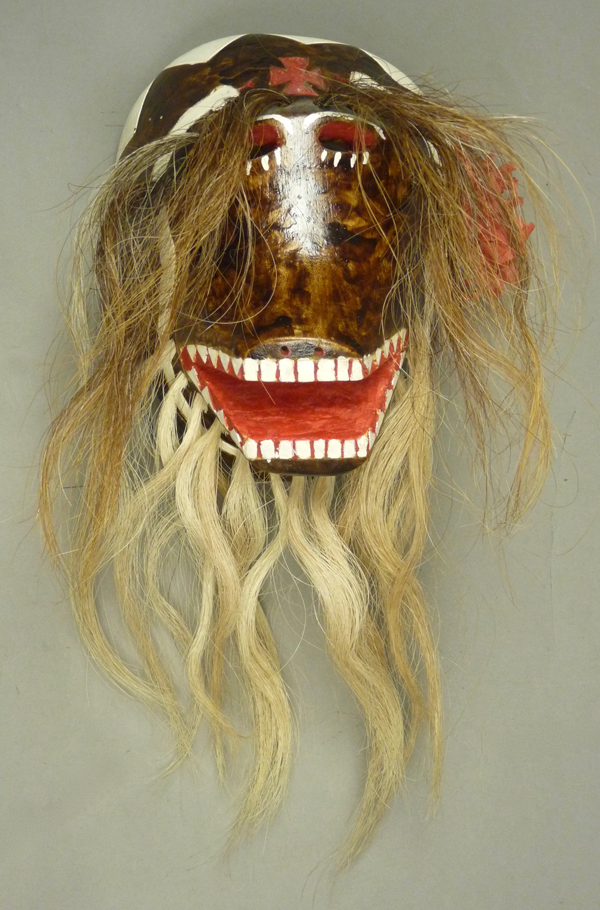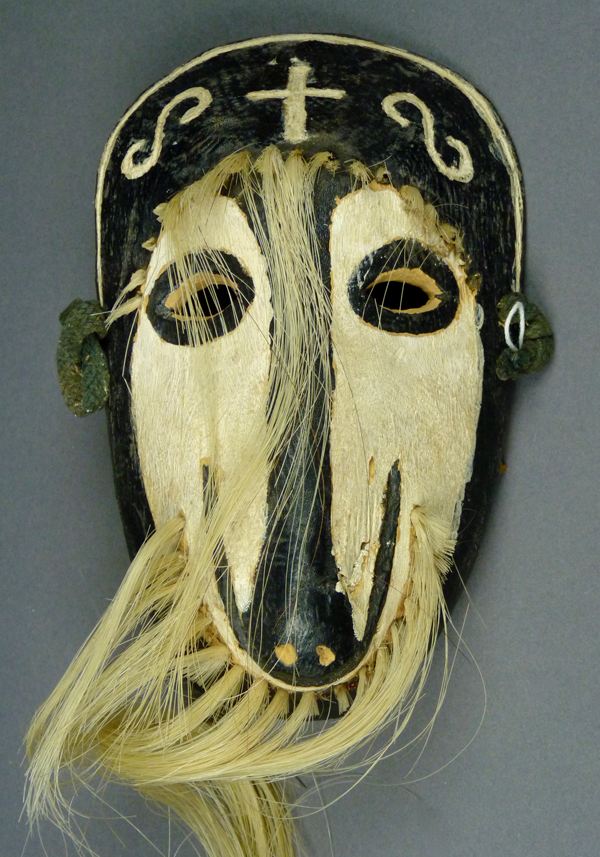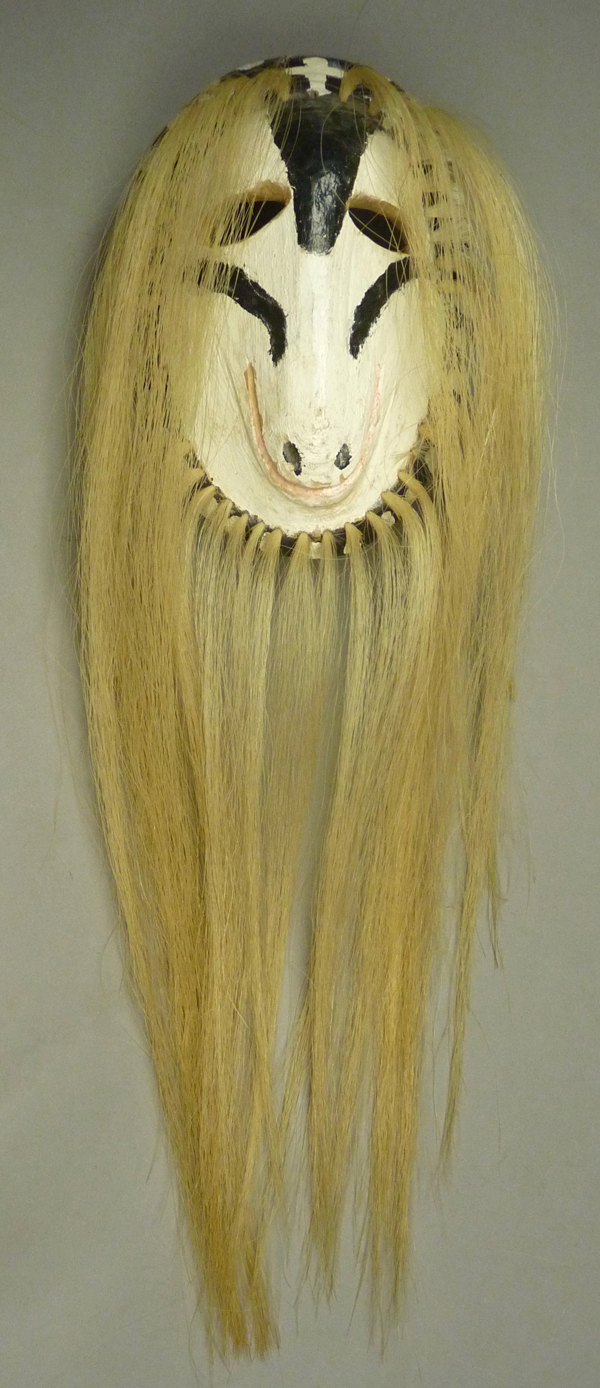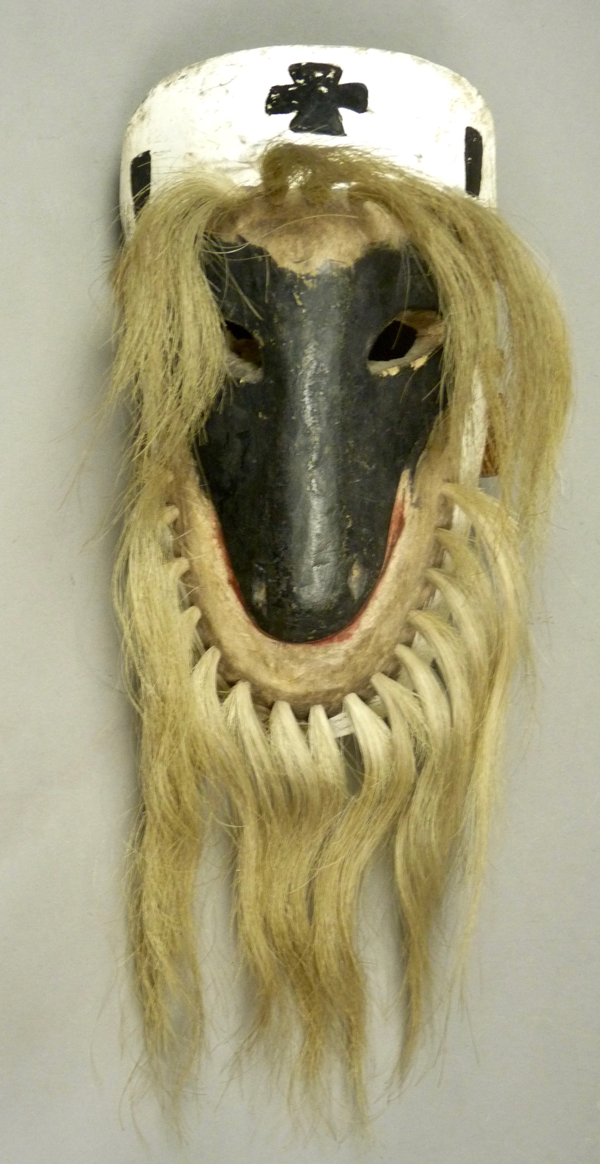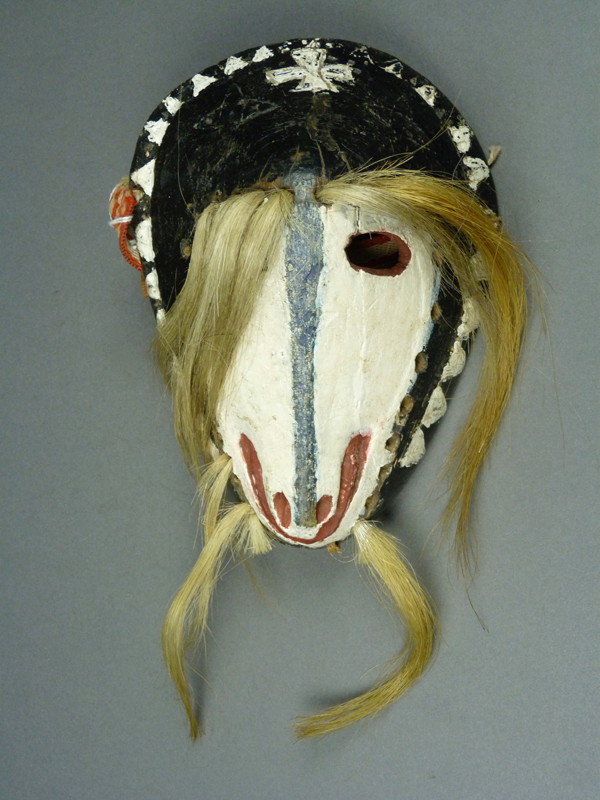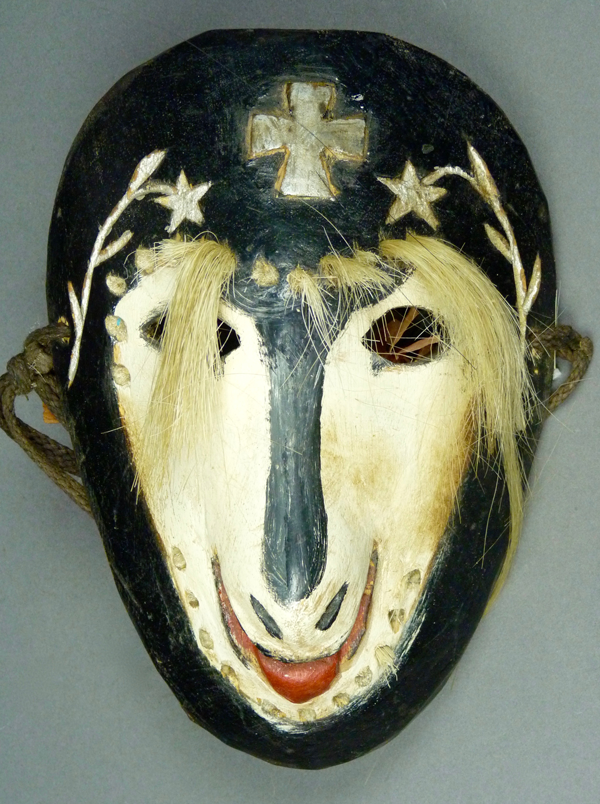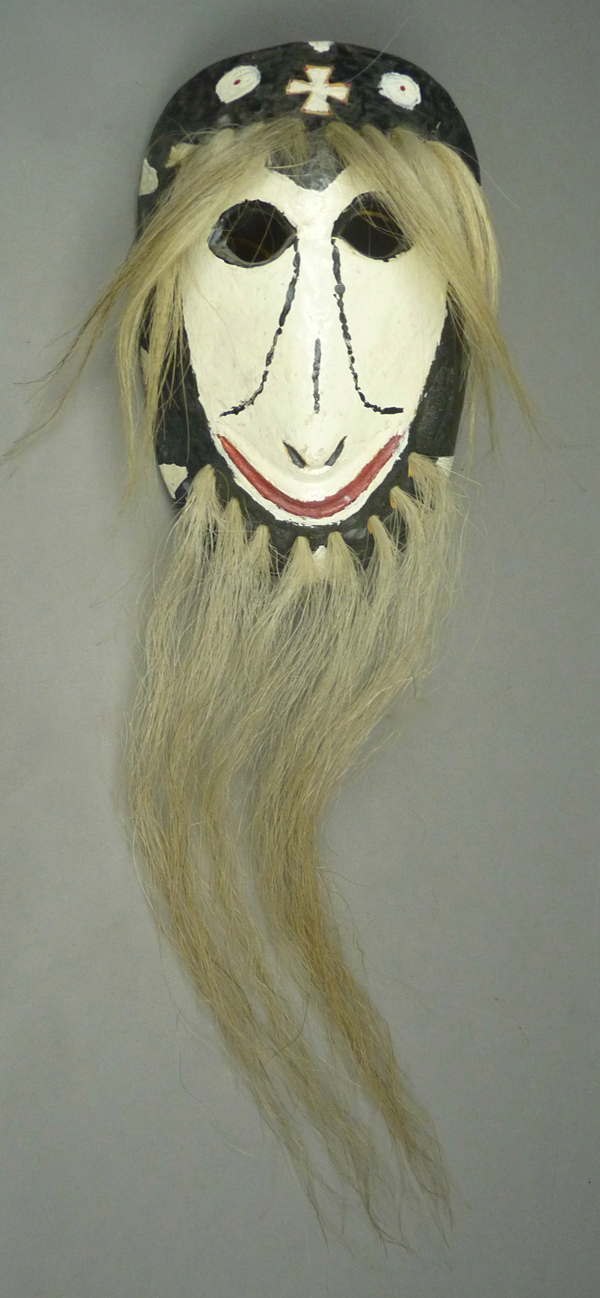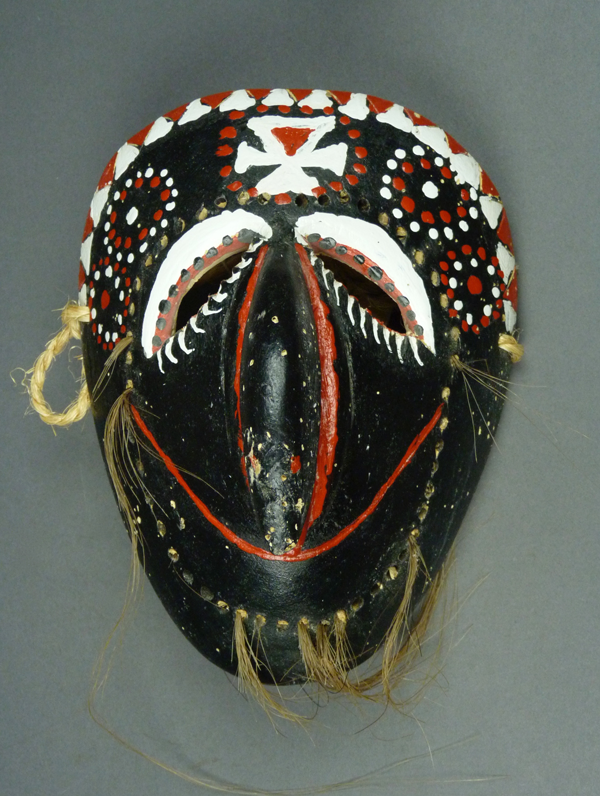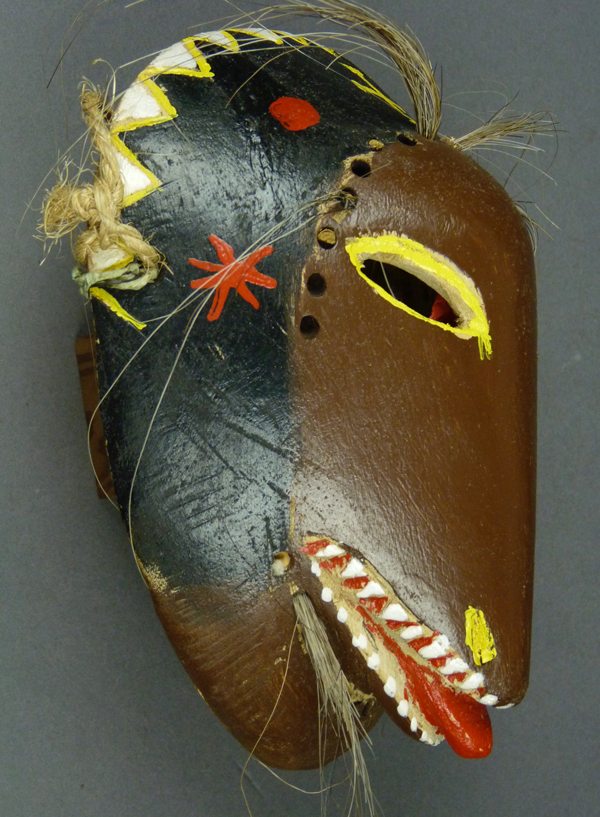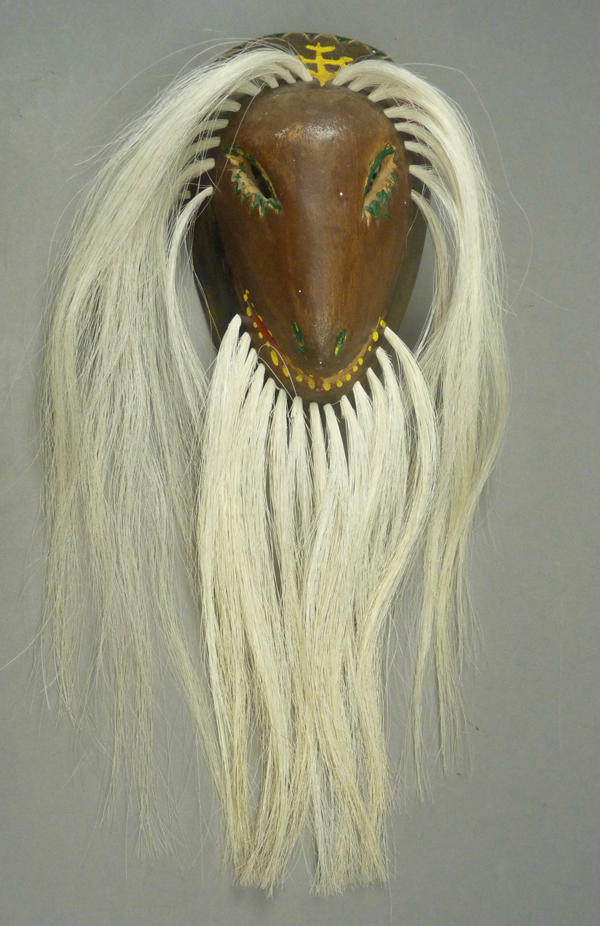In 1989, Barney Burns and Mahina Drees collected approximately 20 Mayo Pascola masks that had been carved by Francisco “Poncho” Acacia Estrella, who was living at la Divisa, a small town in the Municipio of El Fuerte in Sinaloa. I have no evidence that they bought any other masks by this carver, either in earlier years or later. At any rate, when I photographed their collection in 2016, they still had 16 of Francisco’s masks that they had collected in 1989. All of those masks had been danced. Evidently Tom Kolaz had earlier purchased two of the masks from this group, for when he sold them to me in 1998, those masks still had tags and labels that had been written by Mahina in 1989. In 2001 I bought a third mask by Pancho from the shop at the Arizona State Museum, and it too had a tag and notations in Mahina’s hand. All three of my masks had been danced. Today I will show my trio by this carver, and then I will throw in five more from those that remained in the collection of Barney and Mahina in 2016. Hopefully there are a few more masks by this carver in other hands.
This is one of the pair that I purchased from Tom Kolaz in 1998. It appears to be a Perro (dog) mask. Poncho’s animal Pascola masks are mysterious, as the labels do not identify the animal represented, and one is left to speculate—dog, pig, or mystery animal?

